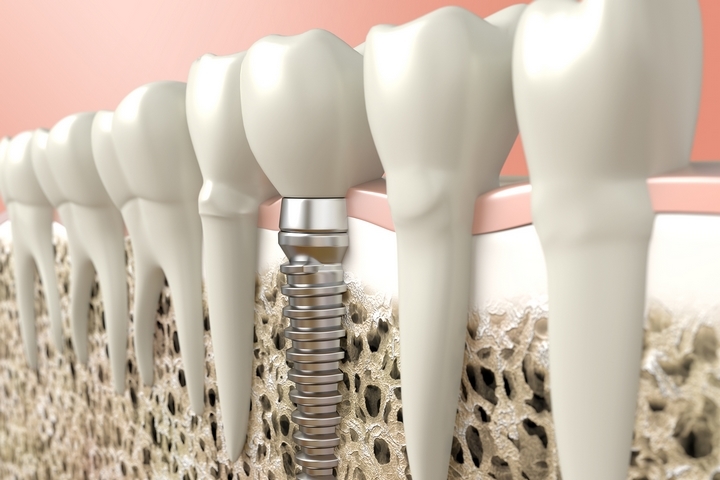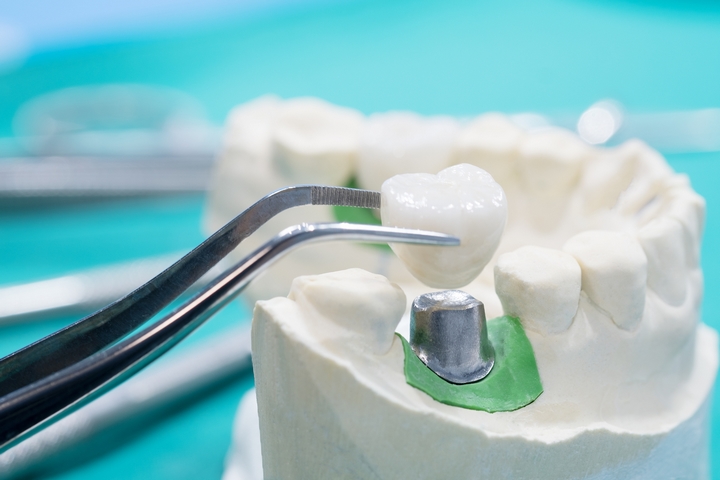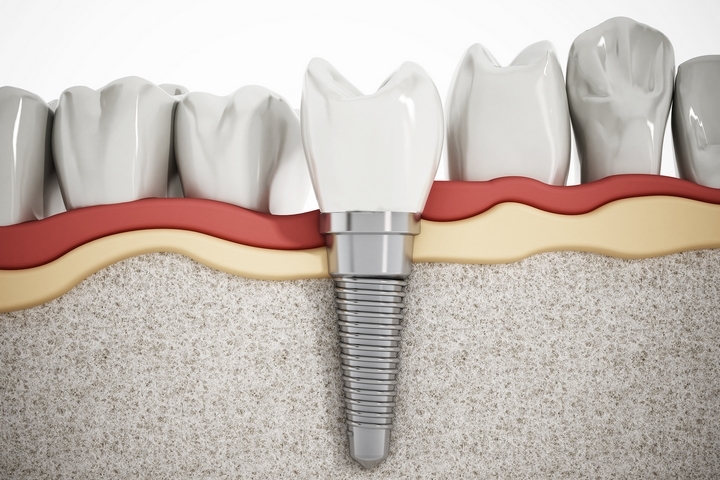In spite of remarkable advances in dental care, many people still suffer from a myriad of dental conditions. These problems range from decay, periodontal diseases, and injuries, that can cost them their smiles.
The good news is dental implants can restore your dental health and get you smiling confidently once again. Dental implants look just like your natural teeth, and sometimes they look even better! You can usually get dental implants with your regular dentist.
Dental implants are made from titanium. They look like hollow screws. The second part of the implant connects the screw to the crown. This part is known as the abutment, which is also made from titanium material. The third and most visible part of the implant is the tooth itself. Although dental implants are artificial, they require as much care and attention as you give your natural teeth.
But how do dental implants work exactly? Here is a guide about the dental implants procedure:
1. Titanium Post Is Inserted Into the Jawbone
 Dental implants rely on a vital component like titanium post. It would be impossible to have a dental implant without this component. This is because the post secures the implant in place.
Dental implants rely on a vital component like titanium post. It would be impossible to have a dental implant without this component. This is because the post secures the implant in place.
However, before affixing the titanium post, your dentist should first assess the jawbone to determine its density and quality. The jawbone should be healthy and strong enough to support and fuse the post. This forms a strong bond that cannot be broken, securing the implants.
2. Using Titanium Post, Which Is Bio-Compatible
 This is the primary reason why a titanium post is preferred when it comes to securing dental implants. The body doesn’t see titanium as a foreign object, so it doesn’t reject it. Among surgically implanted devices, dental implants are the most compatible with the human body. They have the highest chances of success among surgically implanted devices.
This is the primary reason why a titanium post is preferred when it comes to securing dental implants. The body doesn’t see titanium as a foreign object, so it doesn’t reject it. Among surgically implanted devices, dental implants are the most compatible with the human body. They have the highest chances of success among surgically implanted devices.
3. Implanting the Titanium Post
 The goal is to insert the titanium post into the jaw. It’s inserted past the gum and into the jawbone to make it as stable as possible. Once inserted, the bone starts to fuse around the post as the pierced gum heals around it in a process called osseointegration. As it heals, a small protruding section of the post is visible above the gum line, which is an indication that it can now connect to the abutment.
The goal is to insert the titanium post into the jaw. It’s inserted past the gum and into the jawbone to make it as stable as possible. Once inserted, the bone starts to fuse around the post as the pierced gum heals around it in a process called osseointegration. As it heals, a small protruding section of the post is visible above the gum line, which is an indication that it can now connect to the abutment.
4. Through Osseointegration
 The name osseointegration comes from two Latin words, “Osseo” (bony) and “integrate” (to make whole). It refers to the process that takes place between the living bone and the surface of the implant. It was initially used in the prosthetic replacement of teeth by creating a foundation for modern-day implants.
The name osseointegration comes from two Latin words, “Osseo” (bony) and “integrate” (to make whole). It refers to the process that takes place between the living bone and the surface of the implant. It was initially used in the prosthetic replacement of teeth by creating a foundation for modern-day implants.
The implants take several months to securely bond with the jawbone. Hence, patience is essential once you undergo this procedure.
Once your tooth or teeth are extracted, get the implant restored as soon as possible. This is because the bone is like a muscle, and if the implants are not implanted in a timely manner, the jawbone may start to disintegrate, making it impossible to bond correctly with the implant.
5. Abutment
 These are small connectors that aid in fastening your permanent crown, bridge or dentures. For the complete bonding of your implant and jawbone to occur, the bio-compatible titanium post is drilled into the jawbone.
These are small connectors that aid in fastening your permanent crown, bridge or dentures. For the complete bonding of your implant and jawbone to occur, the bio-compatible titanium post is drilled into the jawbone.
The abutment is a small connector, which links the visible part of the tooth to the titanium post. In most cases, once you undergo this procedure, you’re given temporary crowns for your teeth to help you maintain the appearance of a perfect smile. Once the implant fuses into the jawbone, the dentist inserts abutments to secure your permanent crown.
6. Securing the Crowns
 A porcelain crown is the visible part of a dental implant. They are custom designed to fit your jawbone structure, which is perhaps why they are so popular with patients.
A porcelain crown is the visible part of a dental implant. They are custom designed to fit your jawbone structure, which is perhaps why they are so popular with patients.
The crown is customized according to a person’s tooth shape, height, and even colour. As a result, they look so natural that one would think they were natural teeth. It’s almost impossible to distinguish them from the rest of your teeth. The crowns are then affixed to the abutment to finish off the installation of dental implants.
7. Supporting Restorative Prosthesis and Maintaining Bone Volume
 The test of dental implants is in how they work once they have been installed in your mouth. This dental treatment option is the only one that comes with a biological connection to the jawbone, making implants similar to your natural teeth. This is perhaps why they have been the dental treatment of choice among many people for a long time.
The test of dental implants is in how they work once they have been installed in your mouth. This dental treatment option is the only one that comes with a biological connection to the jawbone, making implants similar to your natural teeth. This is perhaps why they have been the dental treatment of choice among many people for a long time.
8. Bone Retention
 As noted above, osseointegration is the process of connecting dental implants to the jawbone. Besides anchorage, they help in bone retention.
As noted above, osseointegration is the process of connecting dental implants to the jawbone. Besides anchorage, they help in bone retention.
In osseointegration, bone cells move into the micromechanical structure. As they do, they thread along the titanium implant’s length, forming a special bio-physical connection. As a result, the implant is bonded securely into the jawbone. However, this bonding process could take several months before the implants are firmly secured.
As mentioned, like muscles, bones also tend to waste away when not in use. The jawbone’s work is to keep your teeth in place. If it’s not used for this function, it tends to waste away and ultimately becomes atrophic.
When missing teeth are restored using a titanium post that’s inserted into the bone, the latter’s functionality and vitality are restored. It’s, therefore, necessary for a dentist to assess your oral health to make sure there’s no bone disintegration.




